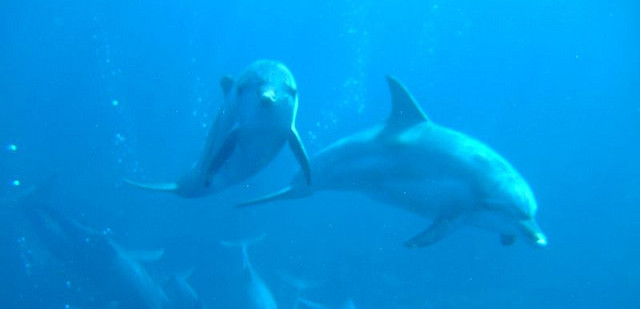
In 1972 biologists Colin Tayler and Graham Saayman were observing a group of Indo-Pacific bottlenose dolphins in a South African aquarium. One of them, a 6-month-old calf named Dolly, began to seek their attention by pressing feathers, stones, seaweed, and fish skins against the glass of the viewing chamber. If they ignored her she swam off and returned with a different object.
At the end of one observation session, one of the investigators blew a cloud of cigarette smoke against the glass as Dolly was looking in. “The observer was astonished when the animal immediately swam off to its mother, returned and released a mouthful of milk which engulfed her head, giving much the same effect as had the cigarette smoke,” the biologists reported. “Dolly subsequently used this behaviour as a regular device to attract attention.”
“Dolly didn’t ‘copy’ (she wasn’t really smoking) or imitate with intent to achieve the same purpose,” argues ecologist Carl Safina in Beyond Words: What Animals Think and Feel. “Somehow Dolly came up with the idea of using milk to represent smoke. Using one thing to represent something else isn’t just mimicking. It is art.”
(C.K. Tayler and G.S. Saayman, “Imitative Behaviour by Indian Ocean Bottlenose Dolphins [Tursiops aduncus] in Captivity,” Behaviour 44:3 [1973], 286-298.)
